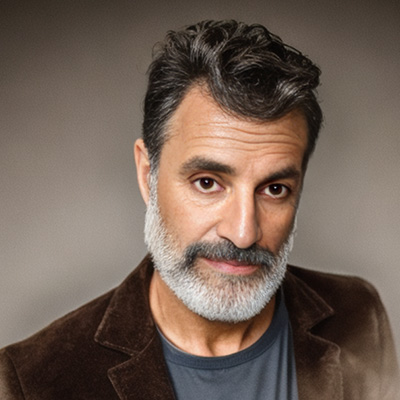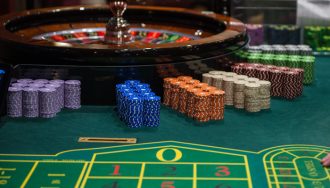A Complete Guide to Bluffing in Poker
 Guide to Bluffing in Poker
Guide to Bluffing in Poker
- How to Pull Off the Best Poker Bluff
- Finding the Right Poker Bluffing Strategy
- Psychology Behind Successful Bluffing
- Perfect Timing for Your Poker Bluff
- Common Bluffing Mistakes to Avoid
- How to Practice Bluffing
- Frequently Asked Questions
Poker is as much a game of strategy and psychology as it is a game of chance. The ability to bluff – to make your opponents think you have a hand different from what you actually hold – is an invaluable skill in the game. It’s a high-risk, high-reward move that, when done correctly, can win you a lot of money – and a ton of respect at the table.
However, before bluffing in poker, it’s important to know how to actually do it – which is exactly what this comprehensive guide will cover.
How to Pull Off the Best Poker Bluff
Want to learn how to pull off the best poker bluff? Then you’ll need to first understand what a bluff actually is. Bluffing in poker is, essentially, telling a story; your bet sizes, your posture at the table, what you say, where you look – all these factors and more are designed to convince the other players that you hold the winning hand, even if you don’t.
Successful bluffs aren’t just acts of deception but well-timed strategic moves that capitalize on the situations presented at the poker table. Knowing when, how, and against whom to bluff can be the difference between an amateur player and a seasoned pro. Still, avoid all that in case you want to play video poker online. It is based on the card game but relates to slots.
What’s more, bluffing can work whether you’re sitting at a land-based casino in Vegas, or whether you play poker online in New Jersey on a Saturday night! It also doesn’t matter if you prefer to enjoy Five Card Draw Poker or another variation of the popular game. Let’s get started.
Finding the Right Poker Bluffing Strategy
A successful bluff in Razz poker or any other poker game isn’t simply about keeping a poker face. It’s about understanding the game’s dynamics and choosing the right moment to pull off a bluff against your opponents. There is no one-size-fits-all bluffing strategy, as the effectiveness of your bluff depends on several factors, including your opponents, your table image, and the specific game situation.
Firstly, it’s crucial to consider your opponents. Are they experienced players who might see through a blatant bluff? Or are they beginners who might be more easily fooled? More experienced players are more likely to recognize bluffing patterns and pick up on subtle cues, so it’s essential to adjust your bluffing strategy accordingly.
With that being said, less experienced players are a lot more likely to keep their hand, thinking it’s a winner – so, paradoxically, bluffing them can actually be harder than you think!
Your table image, or the perception that others have of your play, is another factor. If you’ve been playing conservatively, a sudden aggressive move might be more likely to be perceived as a strong hand, making a bluff more effective. On the other hand, if you’ve been playing loose and aggressively, a bluff might be less believable.
The game’s current situation, including your position at the table and the current pot size, is another important consideration to take into account. Bluffing is generally more effective in late position, where you can react to other players’ actions rather than acting first. Also worth noting is that it’s usually more worthwhile to bluff in a large pot than a small one, as the potential return is higher.
A successful bluff also requires a believable ‘story’. Every bet you make tells a story about the hand you’re supposedly holding. Your story needs to be consistent with the way you’ve been playing and the community cards on the table.
Above all, remember that bluffing is only one tool in your poker arsenal. While it can be a powerful strategy when used correctly, bluffing too often or in the wrong circumstances can be costly.
Balancing bluffs with solid, strategic play is key to long-term poker success. You should also be aware of the nuances between bluffing in person and online. When you play at legal online poker sites your bluffing strategy will differ to the one you use in a land-based casino.
Psychology Behind Successful Bluffing
Learning about the best way to bluff in poker goes beyond simply pretending to play a hand you don’t actually hold. Instead, you should see it as a complex psychological stunt that requires an understanding of human behavior. Bluffing, at its core, is about manipulating your opponents’ perceptions and exploiting their assumptions, and this psychological element often decides the outcome of a bluff.
Firstly, effective bluffing requires a deep understanding of risk perception. People tend to overestimate the likelihood of an opponent having a strong hand when they bet aggressively, particularly if they’ve been playing conservatively. By understanding this bias, you can make your bluffs more believable and, in turn, more effective.
Bluffing also involves elements of deception. Poker players are constantly trying to gather information about their opponents’ hands based on their actions and behavior. When bluffing, your goal is to send false signals and create a narrative that doesn’t match your actual hand, thus misleading your opponents.
Another psychological aspect of bluffing is leveraging social dynamics. Understanding the personalities at the table can provide clues about how players are likely to respond to a bluff. Some players may be risk-averse and more likely to fold, while others may be more confrontational and likely to call. By reading these social cues, you can tailor your bluff to the specific player you’re trying to deceive.
Here’s a table showing some of the key psychological elements to keep in mind when putting together your poker bluffing strategy:
| Psychological Aspect | Description |
|---|---|
| Self-awareness | Understanding and controlling your own emotions and how they affect your decision-making process. |
| Opponent Reading | Interpreting your opponents’ behaviors and reactions to gain insights into their thoughts and feelings. |
| Confidence Projection | Projecting confidence through your actions at the table, even if you don’t have a strong hand. |
| Betting Pattern Variation | Varying your betting patterns to keep your opponents guessing and make it harder for them to read your hand. |
| Body Language Control | Controlling your body language to hide your emotions and intentions from your opponents. |
Perfect Timing for Your Poker Bluff
In poker, timing is everything, and this rings particularly true when it comes to bluffing. A bluff that might fail against one player could succeed against another, and the key to this discrepancy lies in understanding when to bluff and who you’re bluffing against.
A good starting point is to bluff when you’re in a late position. Being one of the last to act gives you valuable insight into your opponents’ strength based on their actions. If everyone checks to you, they are showing weakness, and this might be a good opportunity to bluff.
The state of the pot is another critical consideration. If the pot is large, your opponents are more likely to assume you’re not bluffing since the stakes are high, and thus, they might fold if they don’t have strong hands. Conversely, bluffing may not be effective in smaller pots, where players think you’re exploiting the unappealing pot size to steal it.
Your table image also plays a significant role in timing your bluffs. If you’ve been playing tightly and rarely bluffing, an aggressive bet is more likely to be respected. However, if you’ve been playing loosely and bluffing frequently, your opponents may be less inclined to believe your bluff.
Lastly, consider the cards on the table. Successful bluffs often tell a believable story that aligns with the community cards. If the table cards suggest a possible straight or flush, and you bet as if you have it, your opponents may believe your bluff.
Remember, making a bluff in online poker is different to bluffing in-person. If you’re looking to play online poker in Nevada make sure you check out our recommended sites.
Common Bluffing Mistakes to Avoid
Bluffing in poker is a skill that requires practice and experience. However, even the most experienced players can make mistakes. Here are some common mistakes to avoid when bluffing in poker.
One common mistake is bluffing too often. While bluffing can be an effective strategy, it’s important to use it sparingly. If you bluff too often, your opponents are likely to catch on and call your bluff.
Another common mistake is not considering your opponent’s perspective. When bluffing, it’s important to think about what your opponent is likely to believe. If your bluff is not believable, it’s unlikely to be successful.
A third common mistake is not considering the pot odds. When deciding whether to bluff, it’s important to consider the potential reward compared to the risk. If the pot odds are not in your favor, it might be better folding rather than bluffing. Remember, poker bluffs take practice, and you need to understand you will get caught out from time to time – it’s only natural.
How to Practice Bluffing
Like any other skill, bluffing in poker requires practice. The more you practice, the better you will become at it. Here are some tips for practicing your bluffing skills. Firstly, start by practicing in low-stakes games. This will allow you to experiment with different bluffing strategies without risking too much.
Secondly, pay attention to your opponents’ reactions. This can give you valuable feedback on the effectiveness of your bluffs. If your opponents are consistently calling your bluffs, it might be a sign that you need to adjust your strategy.
Thirdly, practice your poker face. Being able to keep a straight face is an important part of bluffing. Try to keep your emotions in check, regardless of the strength of your hand.




